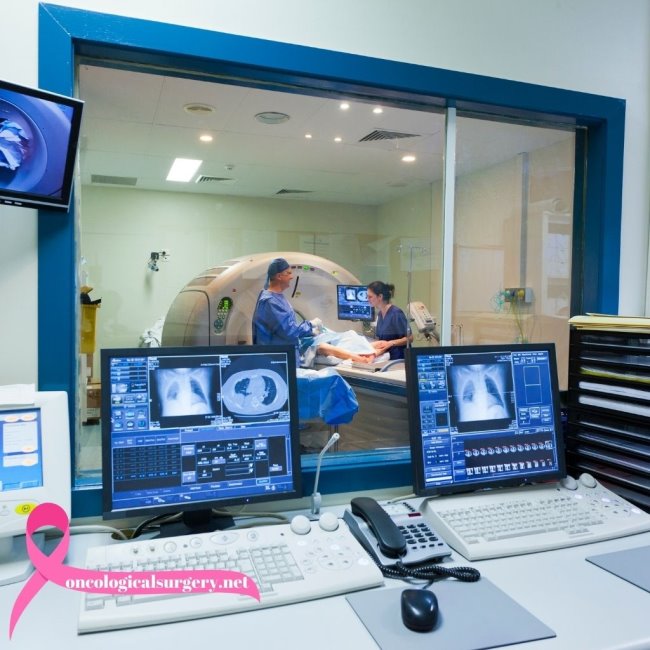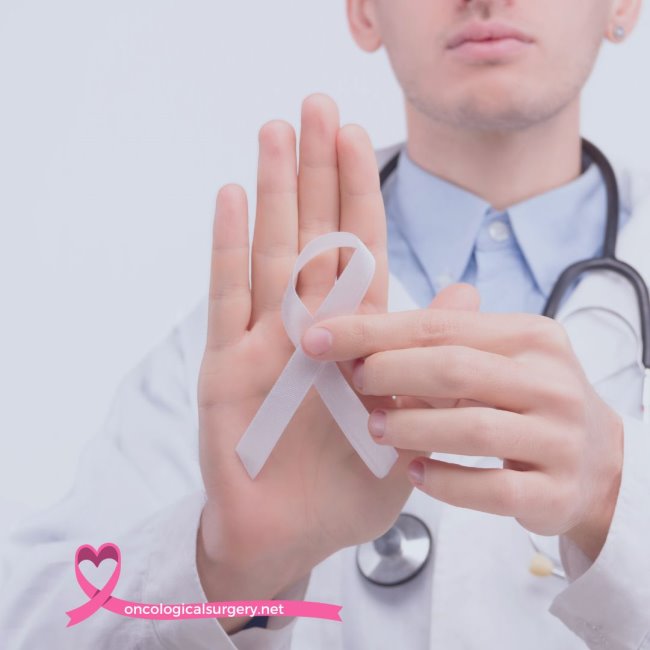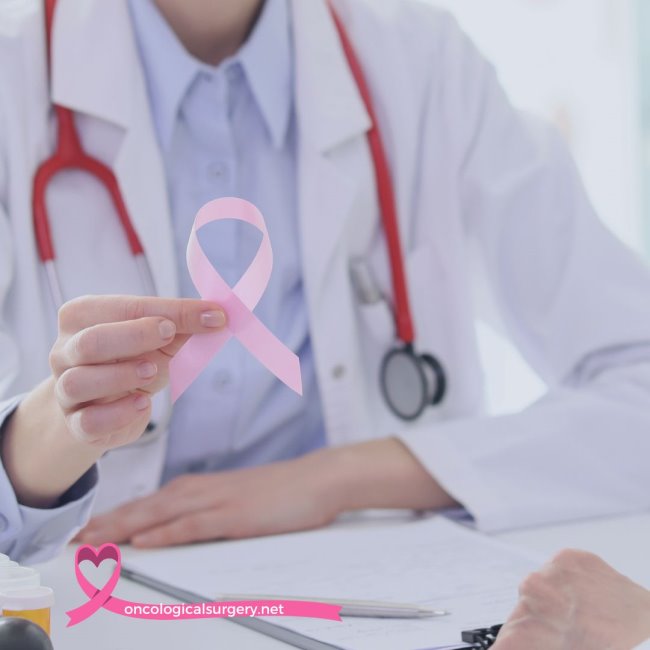
Innovations in Minimally Invasive Oncology Surgery
The use of minimally invasive surgery is just one such advance in this ever-evolving field of oncology. A concept that has totally revolutionized surgical procedures with a number of advantages over open surgeries, minimally invasive oncology surgery uses highly advanced techniques and technology to resect tumors and treat a variety of cancers with minimal physical damage and thus less pain to the patient, returning him to his normal life sooner. Minimally invasive oncology surgery, in the latest innovations of the age, has been put into practice with a view to treating colon cancer, treating pancreatic cancer, stomach cancer treatment, and thyroid cancer treatment.
Minimally Invasive Oncology Surgery: What is it?
Minimally invasive oncology surgery utilizes small-sized incisions, special instruments, and advanced imaging techniques while conducting all sorts of surgical procedures with minimal trauma to the tissues surrounding the site. The opposite of this will be the traditional open surgeries with larger incisions, probably taking more time to recover from, with an increased risk of complications. The main advantages of minimally invasive surgery include:
- Pain and Discomfort Decreased: The smaller the incision, the less postoperative pain and discomfort.
- Generally, faster recovery can be seen in every patient, returning to normal activities sooner.
- With smaller incisions, the chance of infection and other complications is reduced.
- Minimal Scarring: The smaller the incision, the less scarring there will be, compared to a traditional surgery.
This is minimally invasive surgery that has been applied in various types of cancer treatments and offers the least invasive yet most effective option in removing tumors and managing cancer.
Innovative Interventions for Colon Cancer
Management for one of the most common cancers, colon cancer, has revolutionized by using various minimally invasive techniques that have vastly improved outcomes. Of the recent advancements in the treatment of colon cancer, laparoscopic colectomy forms the highlight. It requires a thin, flexible tube called a laparoscope with a camera and light to visualize the cancerous tissue that needs to be removed from the colon.
Laparoscopic Colectomy
It offers several advantages of the general laparoscopic approach to open surgery with regard to the following: small size of incisions decreases postoperative pain and thus speeds up the recovery process. High-definition images from the laparoscope enable surgeons to conduct precise and more accurate resections. General advantages include shorter hospitalization and earlier return to routine activities.
Besides laparoscopic colectomy, robotic-assisted surgery is the other major stride in treating colon cancer. This kind of treatment implies that precision in robotics, together with skill in the surgeon, allows even greater accuracy and control in the procedure.
Robotic-Assisted Surgery
The advantages of robotic-assisted surgery include:
- Precision Enhanced: Robotic systems offer superior dexterity and precision that grant surgeons the capability to perform easily complex maneuvers.
- Improved Ergonomics: Surgeries can be performed from the console with reduced physical strain and limited fatigue from long procedures.
- Less Blood Loss: The precision provided by robotic-assisted surgery offers less blood loss during the time of the procedure.
These newer innovations in minimally invasive treatments of colon cancer have revolutionized the approach of surgeons to the disease and improved the outcomes and quality of life. For details about colon cancer treatment options, refer to our Colon Cancer Treatment page.
Pancreatic Cancer Treatment Advances
The tumor location and aggressive nature make pancreatic cancer especially intractable. However, minimally invasive techniques have created windows of opportunity in improving prognosis and improving treatment outcomes in pancreatic cancer. Among the major innovations in this area is a laparoscopic distal pancreatectomy.
Laparoscopic Distal Pancreatectomy
Laparoscopic distal pancreatectomy represents a minimally invasive procedure that resects the tail and body of the pancreas. The benefits include the following:
- Smaller size of incisions: smaller incisions mean less postoperative pain and faster recovery.
- Lower complication rates: the risk of complications, such as infection and hernias, is lower with a minimally invasive approach.
- Shorter hospital stay: patients are also out of the hospital sooner and back into routine activities more quickly.
Another promising frontier in treating pancreatic cancer involves the use of irreversible electroporation, as it is popularly known, NanoKnife.
Irreversible Electroporation
IRE is a non-invasive treatment modality using electrical pulses that break down permanent pores in the membranes of cancerous cell membranes, thereby developing necrosis in the tumor. The merits of IRE in treating pancreatic cancer include precision in application, with IRE targeting cancerous cells with minimal destruction of healthy tissues around the tumor area.
Minimally invasive: The procedure is done with small probes through the skin, hence minimizing the requirement for large incisions. Effective in Inoperable Tumors: IRE offers treatment to such patients with tumors that are considered inoperable due to their location near vital structures.
These innovations in minimally invasive pancreatic cancer treatment are giving new hope to patients with this challenging disease. To learn about pancreatic cancer treatment options, please refer to our Pancreatic Cancer Treatment page.
Innovative Approaches to Stomach Cancer Treatment
Stomach cancer, or gastric cancer, is another area in which minimally invasive techniques have considerably enhanced. One of the most significant advances in treating stomach cancer is laparoscopic gastrectomy.
Laparoscopic Gastrectomy
Laparoscopic gastrectomy consists of the removal of all or part of the stomach with the use of minimal access techniques. This is associated with several advantages, including the following:
- Smaller Incisions: Smaller incisions reduce postoperative pain and speed up the recovery process.
- Improved Visualization: High-definition images from the laparoscope enable the surgeons to conduct precise accurate resections.
- Shorter Hospital Stay: Most patients will be able to have a shorter hospital stay and can return to normal activities sooner.
Another emerging modality in the treatment of gastric cancer is endoscopic submucosal dissection.
Endoscopic Submucosal Dissection
ESD refers to the minimal invasive method of removing the stomach lining containing the tumor at an early stage. The following are the various advantages of ESD:
- Minimum invasion: In this procedure, the introduction of an endoscope via the mouth precludes external cuts.
- Preserving Stomach Function: ESD can resect tumors without cutting into the stomach. Thus, as much of the stomach is preserved.
- Faster Recovery: Generally, patients recover faster, and complications are less than with conventional surgery.
- These newer minimally invasive treatments for stomach cancer have significantly helped to improve the prognosis and quality of life for many patients. Learn more about stomach cancer treatment options. Visit our Stomach Cancer Treatment page.
Thyroid Cancer Treatment: Advancing
Surgery usually involves the partial or total removal of the thyroid gland as a typical treatment option for thyroid cancer. Thyroid cancer surgery has been revolutionized by the introduction of minimally invasive techniques that guarantee patients less invasiveness with the best results. To date, one of the most interesting and innovative surgical methods developed is minimally invasive video-assisted thyroidectomy.
Minimally Invasive Video-Assisted Thyroidectomy (MIVAT)
MIVAT is performed using a small camera and special tools to remove the thyroid via small cuts. Advantages of MIVAT include smaller incisions, leaving minimal scarring and reduced postoperative pain; improved visualization, as the video-assisted approach allows high-definition images that provide more detail during surgery; and shorter hospital stay, because such patients often enjoy shorter hospital stays and quicker recovery times.
Another promising advance in thyroid cancer surgery is robotic-assisted surgery.
Robotic-Assisted Thyroid Surgery
The advantages of robotic-assisted thyroid surgery include but are not limited to:
- Precision: Robotic systems enable the surgeon with superior dexterity and precision. As a result, it performs delicate maneuvers with ease.
- Minimal Scarring: This can be due to smaller incisions when robotic-assisted techniques are used.
- Reduced Risk of Complications: Robotic-assisted surgery diminishes the risk of complications since precision has been promoted, which would therefore minimize injury to adjacent nerves.
These minimally invasive innovations in thyroid cancer treatment provide less-invasive options for the patients and offer improved outcomes. Learn about thyroid cancer treatment options on our Thyroid Cancer Treatment page.
Conclusion
The new improvements in minimally invasive oncology surgery have transformed cancer treatment and provided patients with options less invasive, reaping several benefits: less post-operative pain, faster recovery rates, and improved results. Minimally invasive treatments of colon, pancreatic, stomach, and thyroid cancer have developed capabilities to improve the quality of life in cancer patients.
With the advent of technology, there is also a constant expectation for further advances in minimally invasive oncology surgery and new hope with better outcomes for patients confronting cancer. For further information about oncology surgery and the latest treatment options, please visit our Oncology Surgery page.








































